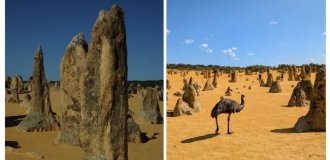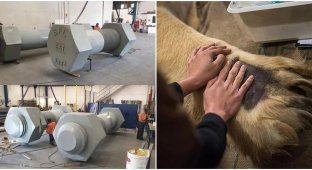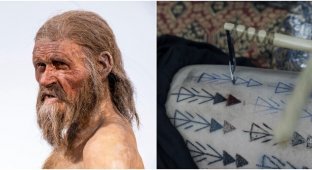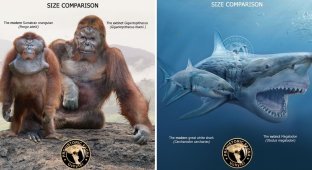15 extinct giants that once roamed North America (17 photos)
Until the end of the last Ice Age, North America was inhabited by ancient cheetahs (Miracinonyx), huge armadillo-like creatures, and giant ground sloths. But scientists for a long time could not understand why these animals went extinct about 10,000 years ago. 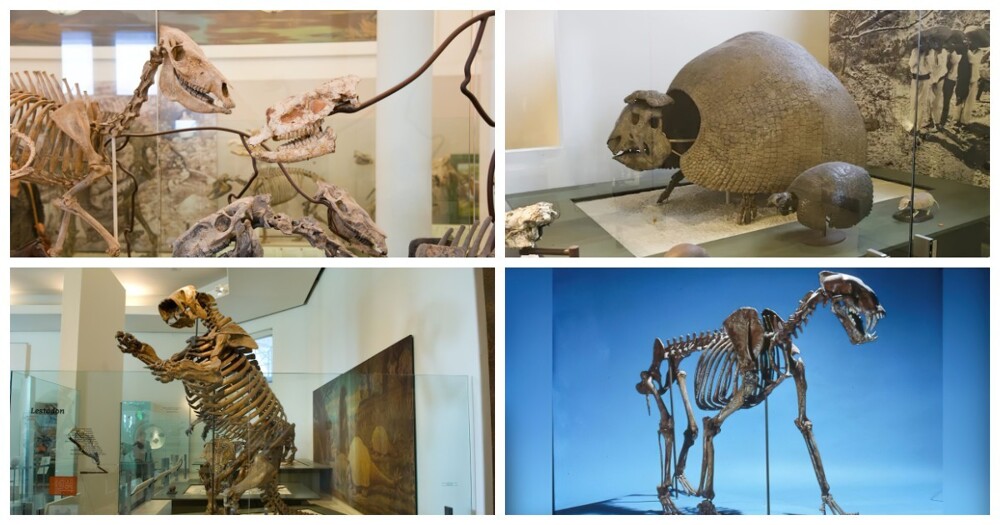
Until the end of the last ice age, North America was inhabited by American cheetahs, huge armadillos and giant sloths. But scientists have long been unable to understand why these animals and other megafauna—creatures heavier than 100 pounds (45 kilograms)—went extinct about 10,000 years ago.
According to a 2015 study published in the journal Science, periods of rapid warming (interstadials) and, to a lesser extent, Ice Age humans hunting the animals are to blame for the extinction of the continent's megafauna. Other studies place much of the blame on the individual, and some scientists argue that a combination of multiple factors are to blame.
Both research and debate about the reasons for the disappearance of these animals will undoubtedly continue. Meanwhile, scientists continue to find fossils of these large creatures. Here are 15 extinct animals from the last North American Ice Age and what scientists know about their lives.
1. Saber-toothed tiger 
The saber-toothed tiger (Smilodon fatalis) lived from approximately 400,000 to 11,000 years ago. It was a large representative of the cat family, weighing from 160 to 280 kg and having an average height from rump to muzzle of about 1.75 m, not counting the tail. S. fatalis was roughly the size of the modern African lion (Panthera leo), but with shorter and sturdier limbs. Its jagged fangs, like blades or sabers, were impressively large - almost 18 centimeters in length.
2. Pleistocene coyote 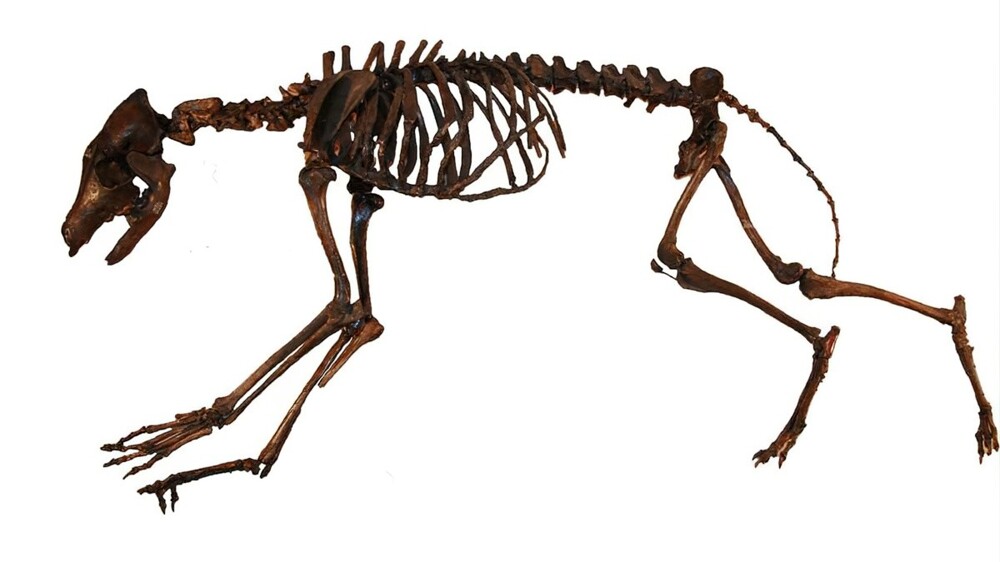
The Ice Age coyote (Canis latrans orcutti), also known as the Pleistocene coyote, was much larger than modern coyotes. Ancient members of the Canidae family weighed between 15 and 25 kg, meaning some were as large as modern wolves (Canis lupus). Modern coyotes (Canis latrans) weigh only 10 to 18 kg. Compared to modern coyotes, the Pleistocene coyote had a thicker, deeper skull and more powerful teeth for eating meat. These features suggest that it could kill larger prey and was more carnivorous.
3. Ancient Bison 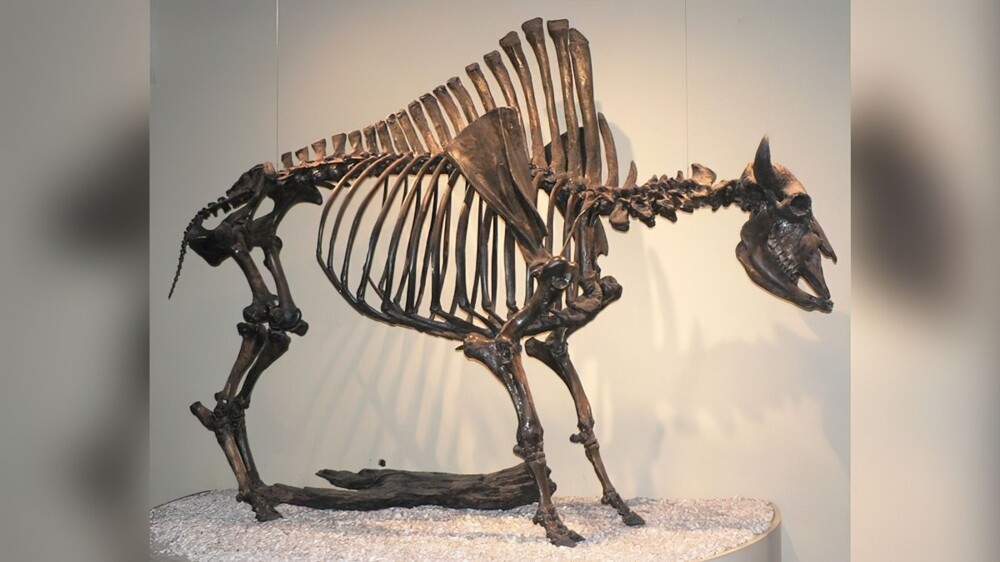
The ancient bison (Bison antiquus) lived approximately 240,000–10,000 years ago. It was 25% larger than the modern American bison (Bison bison): 2.3 m in height, 4.6 m in length and weighing 1,600 kg. Its horns were also longer than those of modern bison. These herbivores are most likely the ancestors of American bison.
4. Ancient Walrus 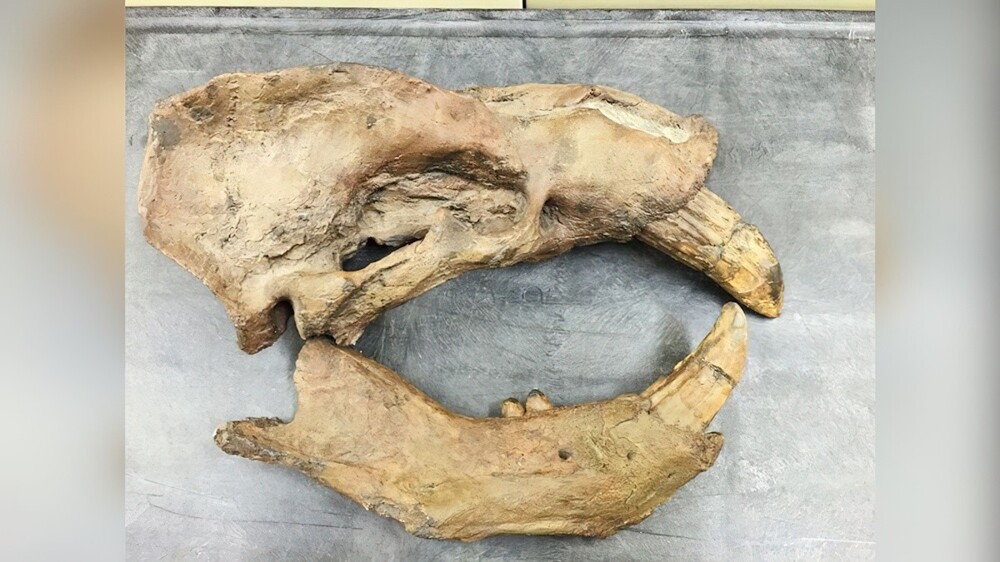
In 1980, researchers in Southern California discovered the nearly complete remains of Gomphotaria pugnax, a now extinct giant pinniped. G. pugnax lived about 8.5 to 5 million years ago, during the Late Miocene epoch, the scientists report in the journal Contributions In Science. Its large skull, 47 cm long, had large upper and lower fangs. The ancient walrus likely swam in shallow waters and used these tusks to stir up sediment on the seafloor in search of food, most likely hard-skinned invertebrates such as mollusks.
5. Homotheria 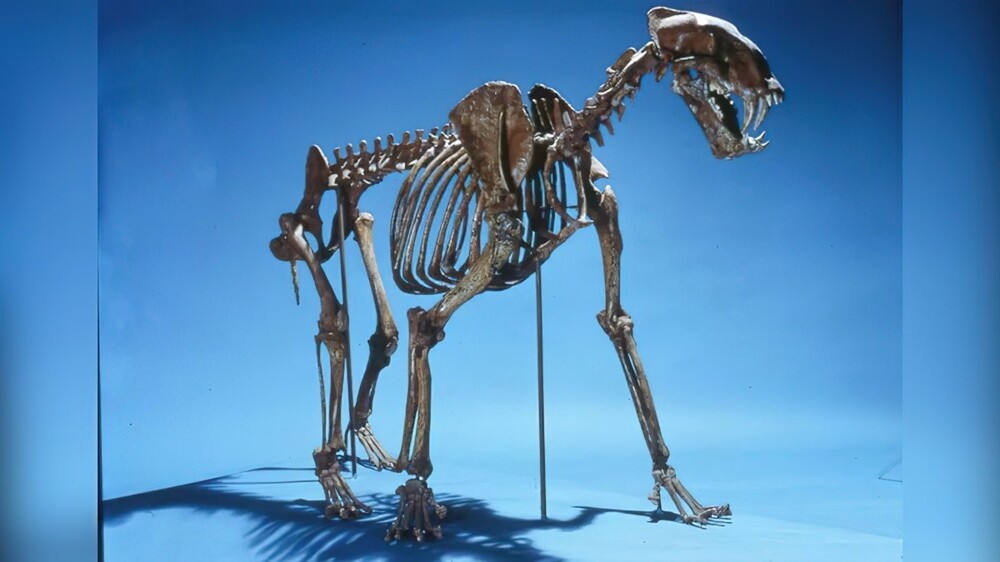
The saber-toothed cat Homotherium had large fangs, powerful forelimbs, a sloping back, and a large optic bulb—all of which made it a deadly predator during the Pleistocene era. Fossils of Homotherium have also been found in Eurasia, but during the last Ice Age the animal crossed the Bering Land Bridge and settled in North America. Homotherium fossils have been found in the La Brea Tar Pits in Southern California and other parts of the United States, including Alaska, Idaho and Texas.
6. North American horses 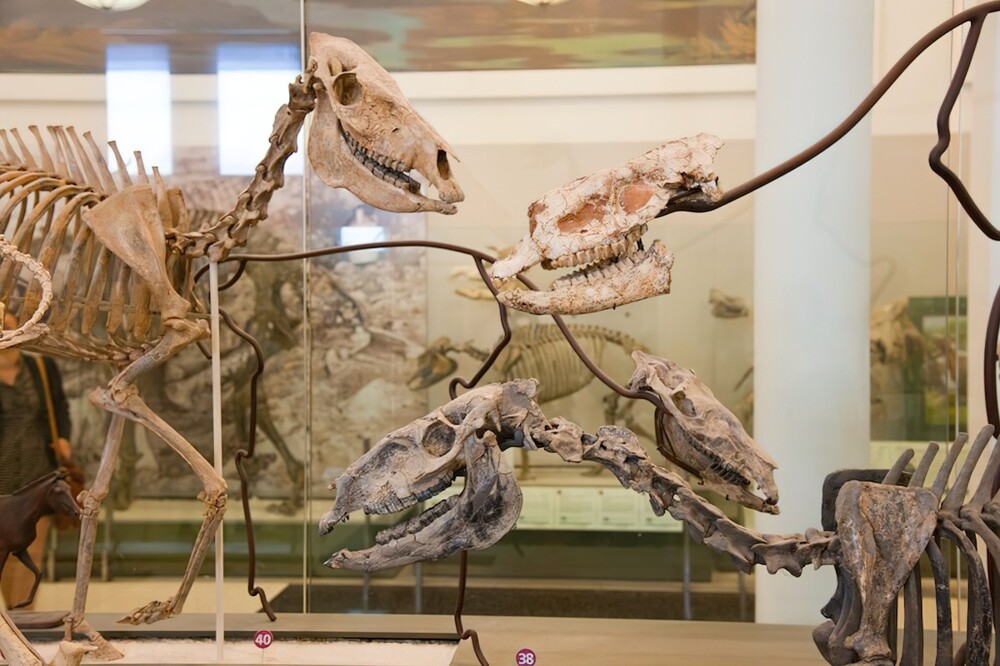
European settlers introduced horses when they landed in the New World. But they did not know that once on this continent there was a thunderous sound of the hooves of ancient horses. Ancient horses lived in North America from about 50 million to 11,000 years ago, when they went extinct at the end of the last Ice Age. One of the main features of this extinction is that they became extinct in North America, but were able to survive in Eurasia and Africa, which is why we still have horses and their relatives, asses and burros.
7. Glyptodon 
Glyptodon looked like a larger version of its distant relative, the armadillo. And it was also protected by a shell made of bone plates. The armored creature, weighing 1 ton, most likely came to North America from South America through the Isthmus of Panama, a land bridge connecting the two Americas. 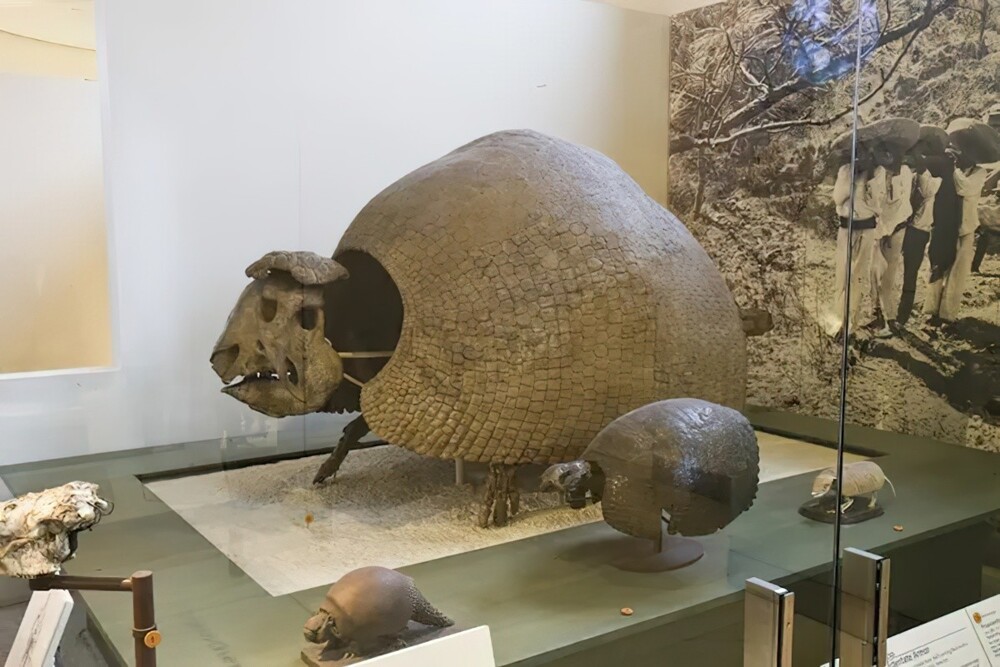
After arriving in North America about 2 million years ago, Glyptodon flourished in what is now coastal Texas and Florida. But the herbivore became extinct within 10,000 years.
8. Mastodon 
Mastodons (Mammut americanum) appeared in North America about 15 million years ago, crossing the land bridge across the Bering Strait, long before their relative, the mammoth. They were also more primitive than mammoths. For example, mastodons had less complex teeth—cone-shaped fangs on their molars—that helped them pick through the leaves, branches, and twigs of deciduous and coniferous trees. They ate marsh plants, which did not contain the abrasive material characteristic of land plants. Mastodons are also slightly shorter than mammoths, but both species reached a height of 2 to 4 m. Both had shaggy hair that protected them from the cold. However, mastodons had long, curved tusks that reached 4.9 m in length. Mammoths, on the contrary, had more curved tusks.
9. Mammoth 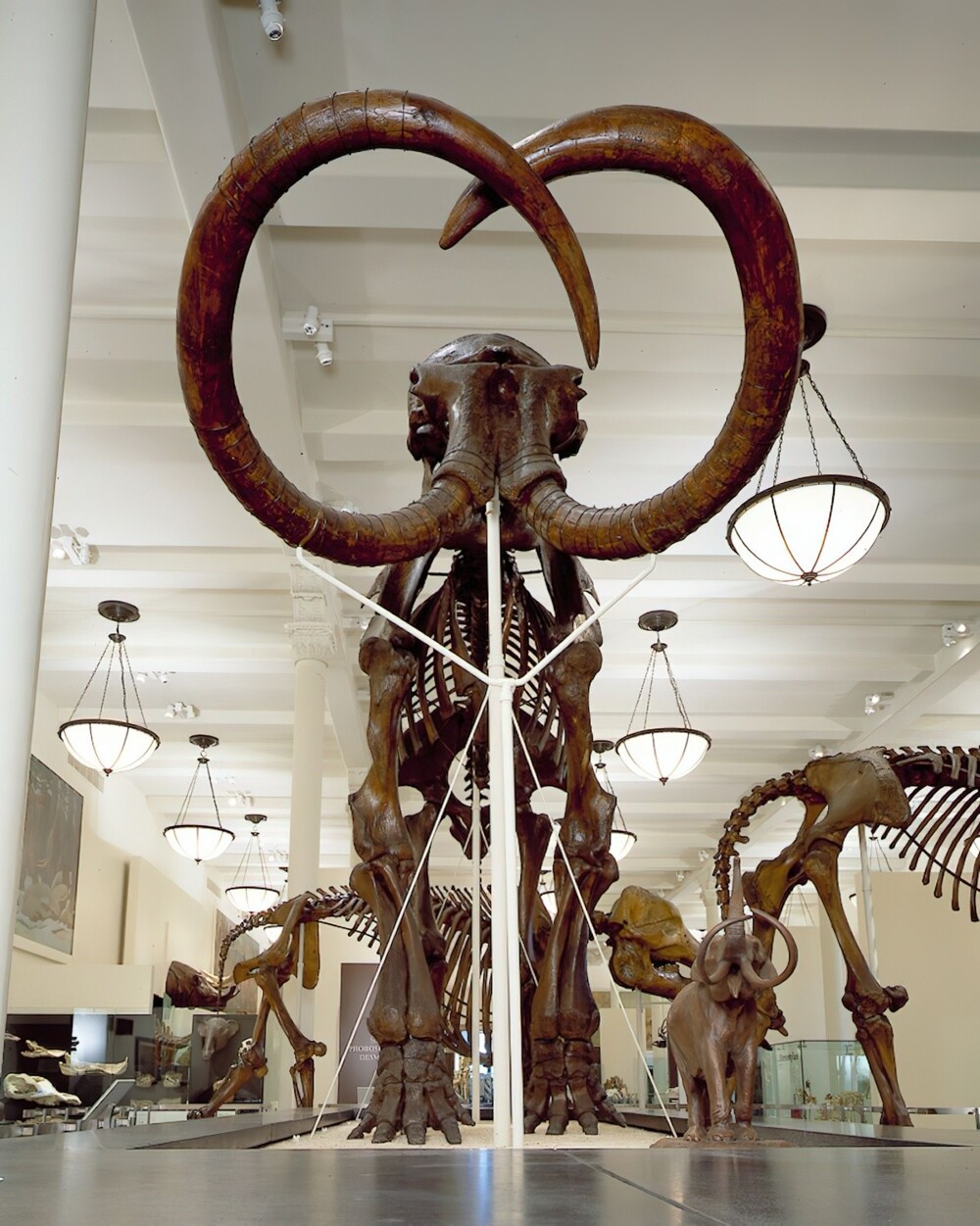
Mammoths (Mammuthus) appeared in North America approximately 1.7-1.2 million years ago. Although there are some anatomical differences between mammoths and mastodons, both belong to the proboscis family. Mammoths had fatty humps on their backs, which likely provided them with nutrients and warmth during icy periods. Mammoths also had flat teeth with a ribbed surface - this structure helped them cut through fibrous vegetation, unlike the teeth of a mastodon. In addition, mammoths are more closely related to modern elephants, especially the Asian elephant, than mastodons.
10. Short-faced bear 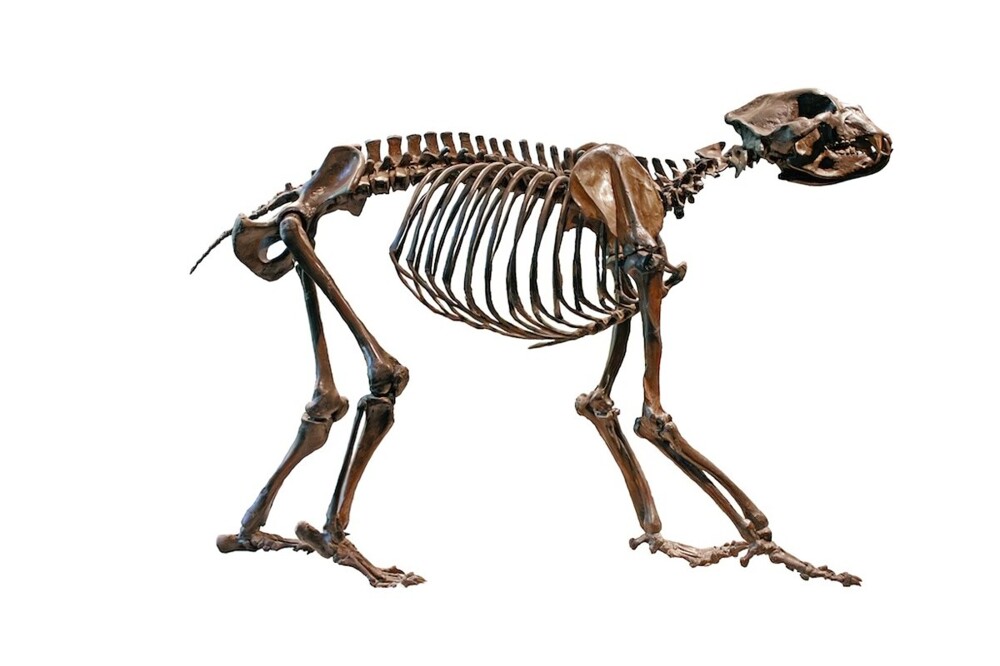
Despite its name, this huge bear did not actually have a short snout. But compared to his long legs, he looked exactly like that. Much like a grizzly bear on stilts - the limbs are at least a third longer than those of a modern grizzly bear. Probably, such long front and rear legs helped him run very quickly, unlike modern bears - they are capable of short bursts, but cannot be called long-distance runners.
11. Dire Wolf 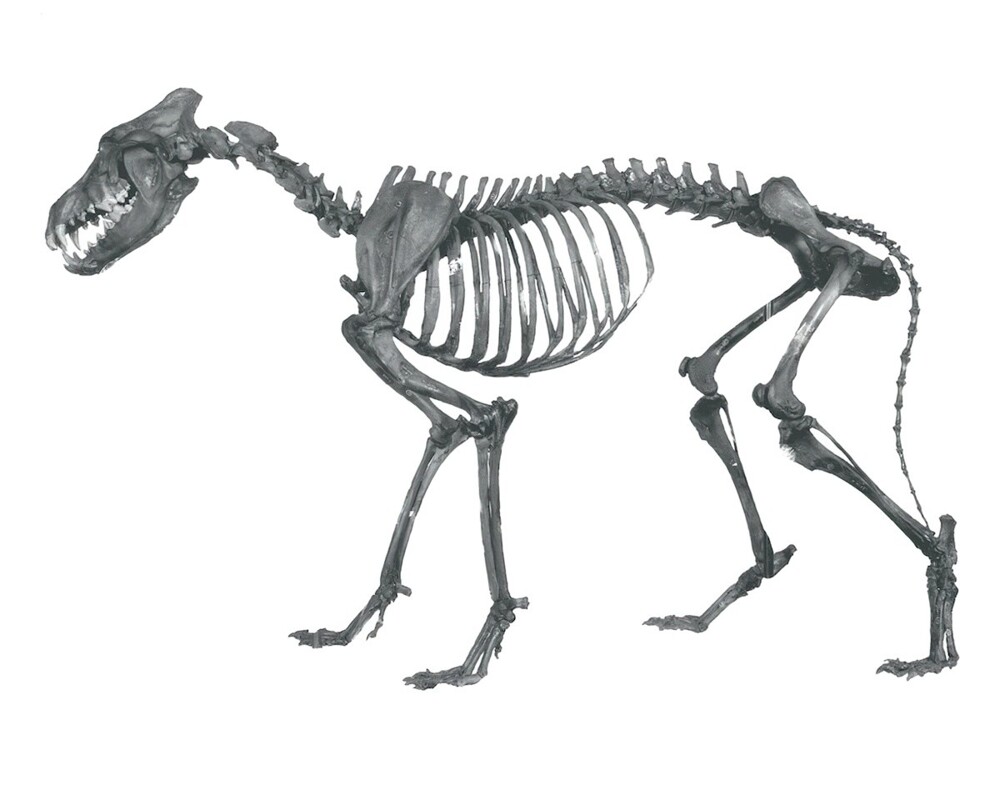
Dire wolves went extinct about 13,000 years ago, but their bones are found in abundance at California's La Brea Tar Pits and Nature's Trap Cave in Wyoming. These skeletons show that dire wolves (Canis dirus) were approximately 25% heavier than modern gray wolves (Canis lupus), weighing between 59 and 68 kg. However, the wolf's limbs were shorter than those of C. lupus, suggesting that it would not have won any races against its younger relative.
12. American cheetah (Miracinonyx) 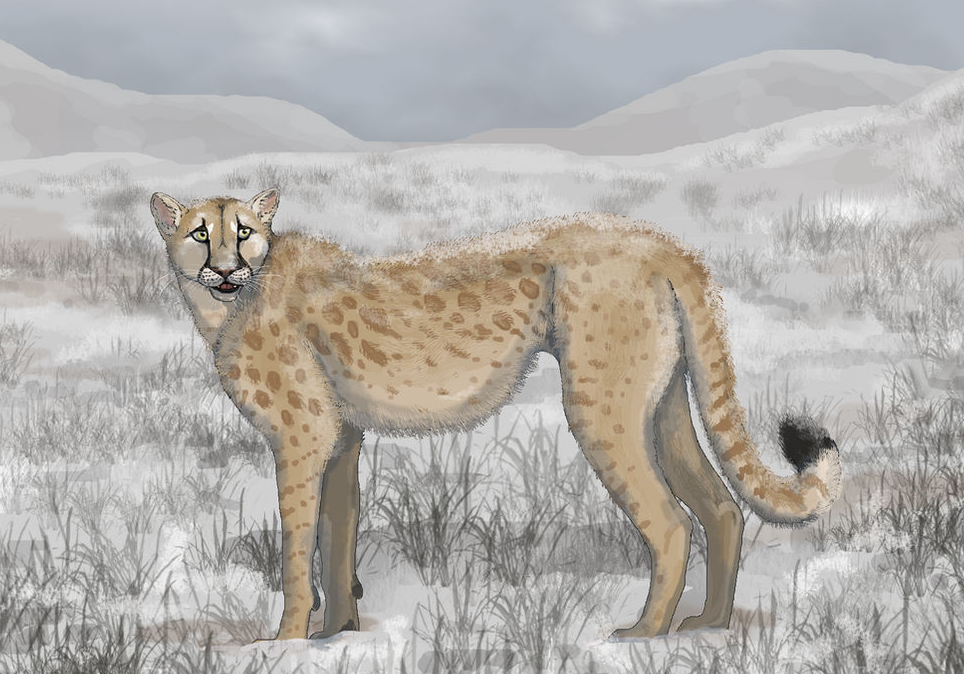
The American cheetah was slightly taller than the modern cheetah: the height at the withers was about 0.85 m, and the weight was about 70 kg. However, the American cheetah was probably not as fast: it had slightly shorter legs, which most likely made it a better climber than a runner.
The researchers named it Miracinonyx inexpectatus, which roughly translates to "wonderfully unexpected cheetah with immovable claws." The first known fossil of M. inexpectatus, found in what is now Texas, was dated by scientists to the Pliocene, between 3.2 and 2.5 million years ago. These animals went extinct about 12,000 years ago.
13. Giant sloth (megalonyx) 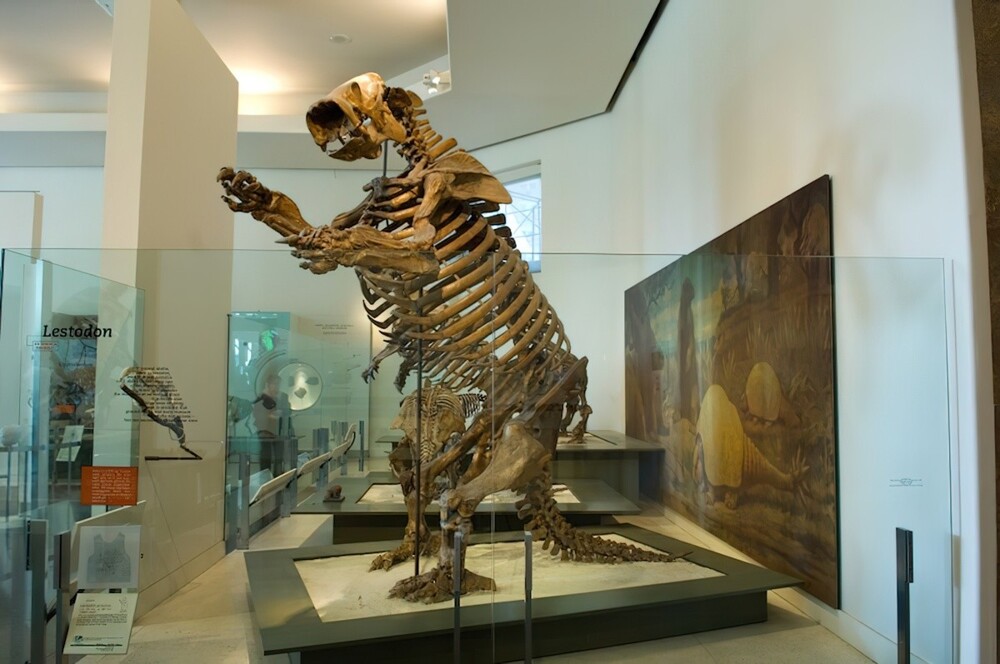
Like Glyptodon, Megalonyx came to North America from South America. Fossils of ground sloths indicate that these animals began living in South America about 35 million years ago. Researchers discovered a 4.8-million-year-old Megalonyx fossil in Mexico, and later specimens were found throughout what is now the Americas, especially in areas where there used to be forests, lakes and rivers. During warmer periods called interglacials, Megalonyx traveled as far north as the Yukon and Alaska. Megalonyx jeffersonii was about 3 m tall and weighed about 1,000 kg. These animals became extinct approximately 11,000 years ago.
14. Giant beaver 
The giant beaver (Castoroides) is known primarily from fossils in the Great Lakes region (which seems logical for a beaver). However, other fossil finds indicate that this giant lived as far as South Carolina and northeastern America. Like Megalonyx, the giant beaver penetrated into Alaska and the Yukon during interglacial periods, but retreated south as temperatures dropped. Castoroides was huge for a beaver, weighing up to 57 kg, much larger than the modern North American beaver (Castor canadensis), which weighs approximately 20 kg. Interestingly, the remains of modern beavers are found in the same sediments as the remains of their ancient relatives, which suggests that they led a similar lifestyle.
15. Camelops 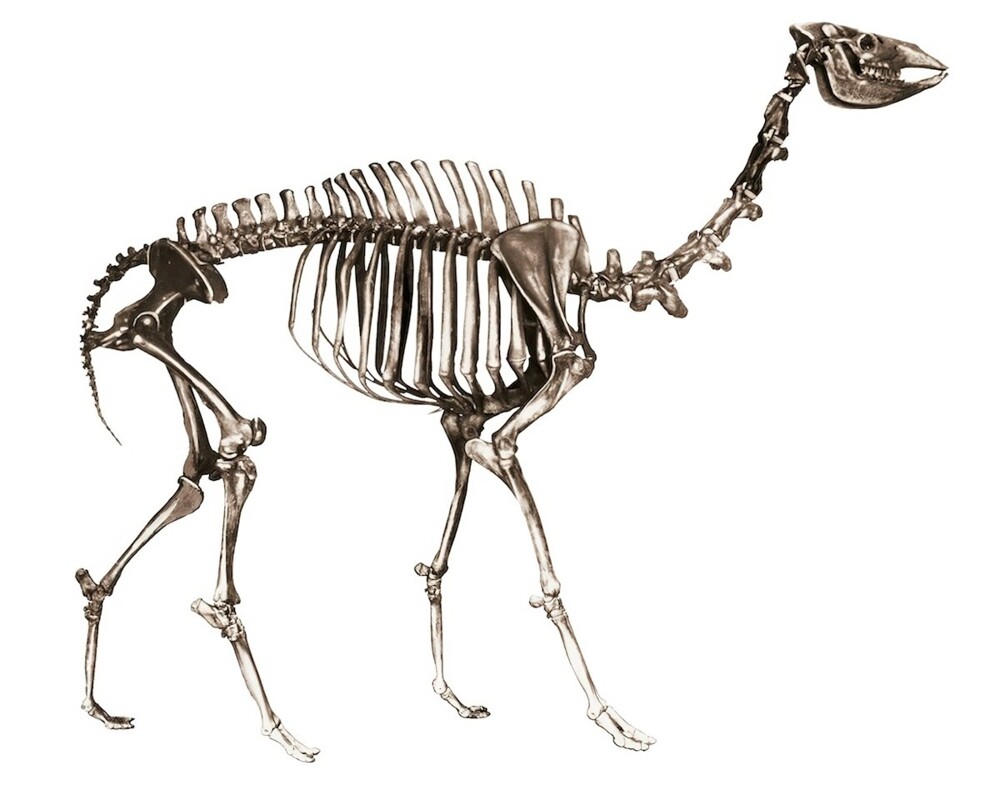
The camelids that once roamed North America are called Camelops, which is Latin for “camels of the past.” However, Camelops is more closely related to llamas than to modern camels. Fossils show that the camelid family appeared in North America during the Eocene epoch, about 45 million years ago. These animals lived in open spaces and in arid areas, but it is unknown whether they could store water, as modern camels do. Camelops was about 2.2 m tall at the withers, weighed up to 800 kg and had a short tail.




